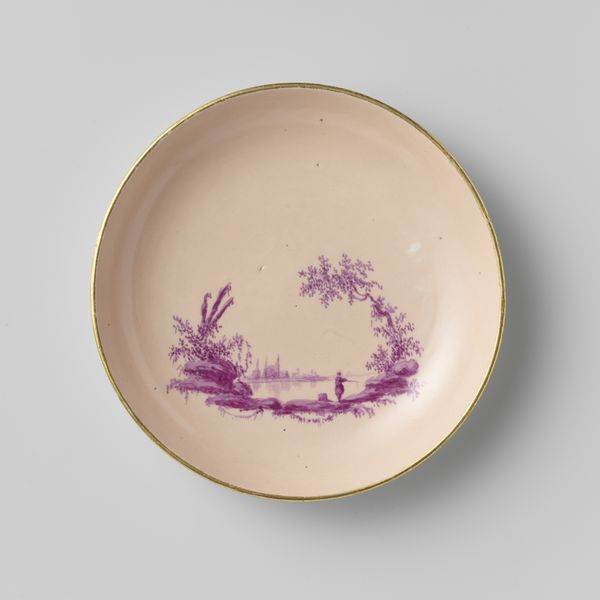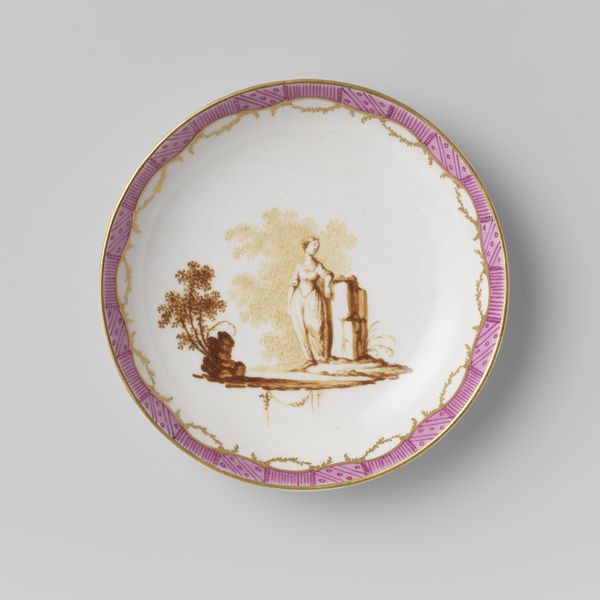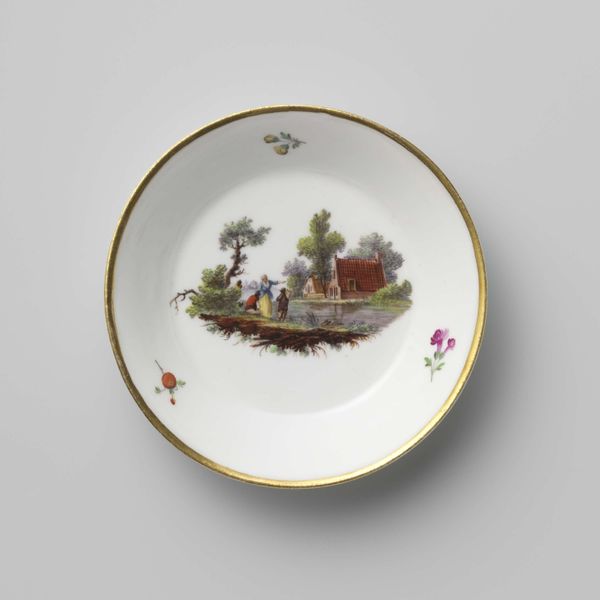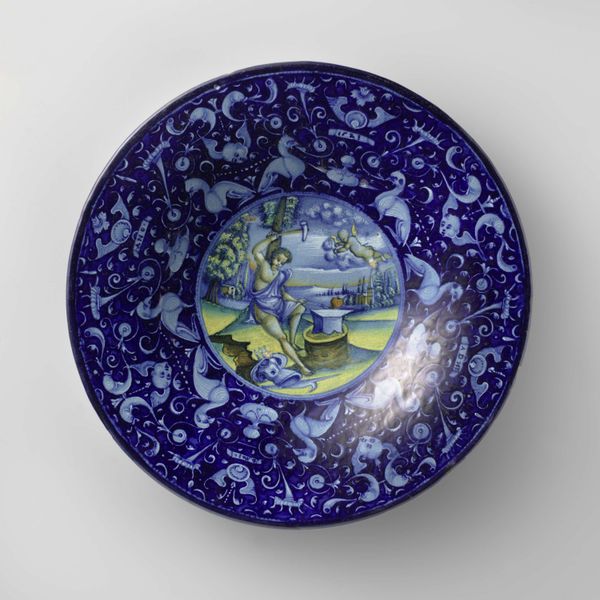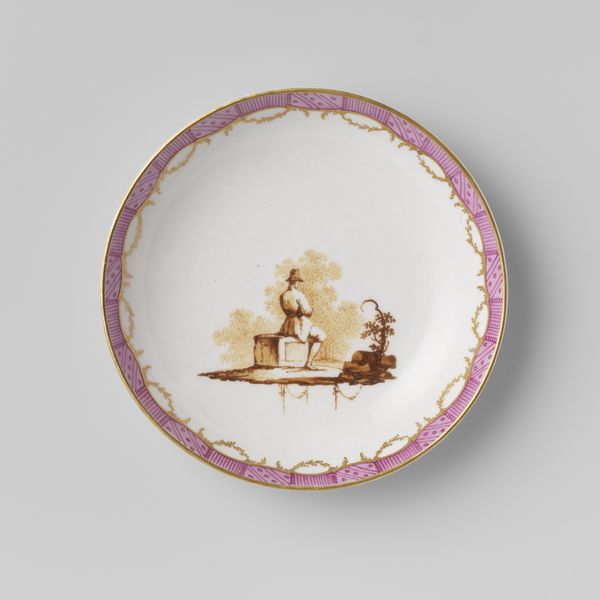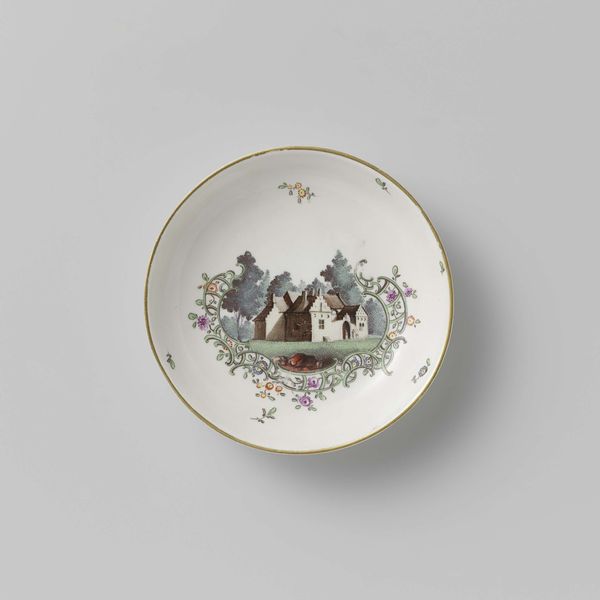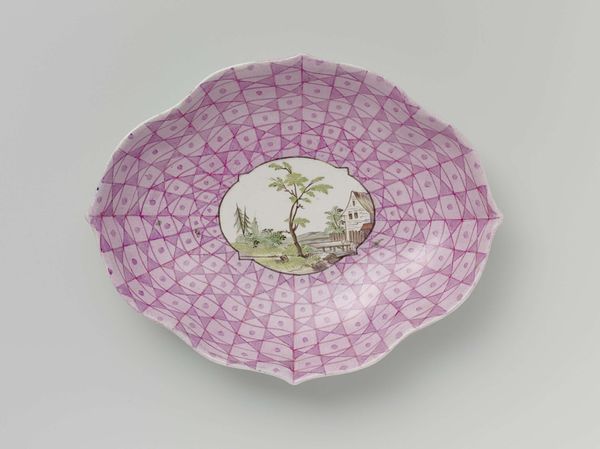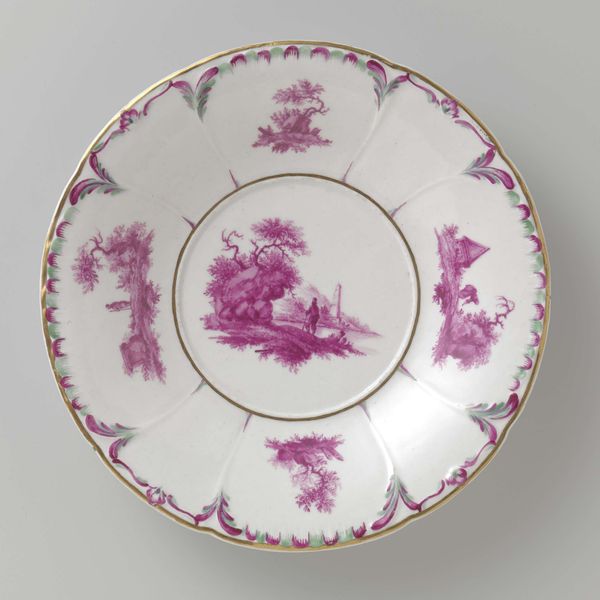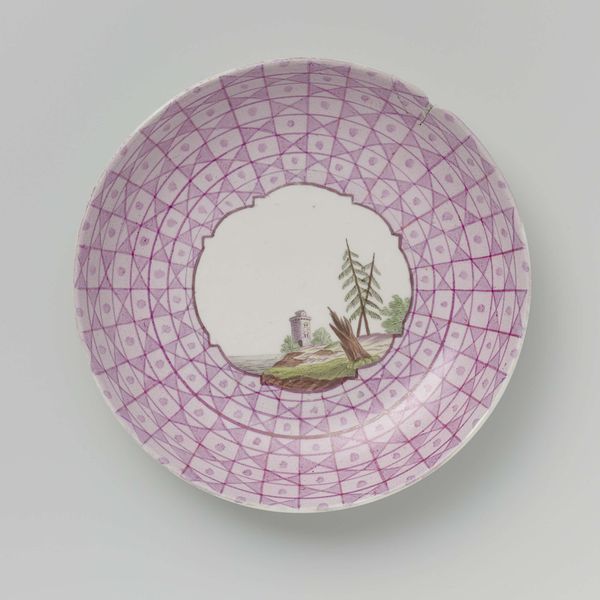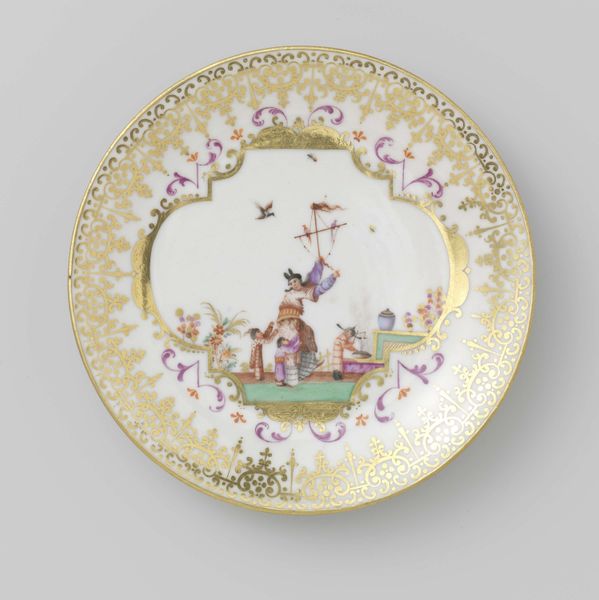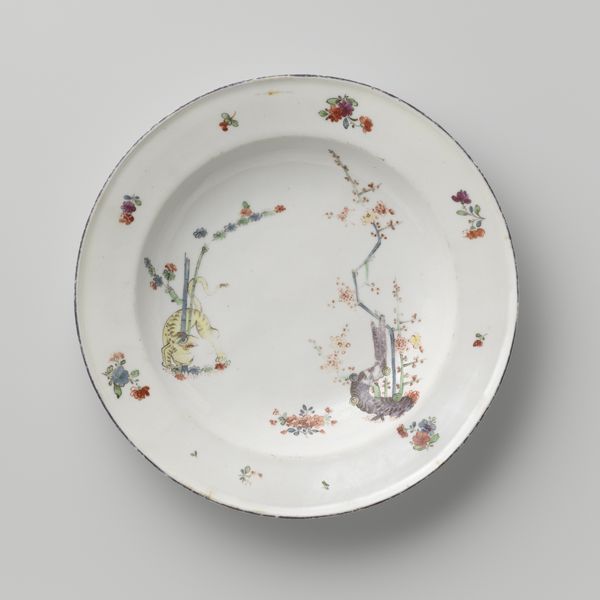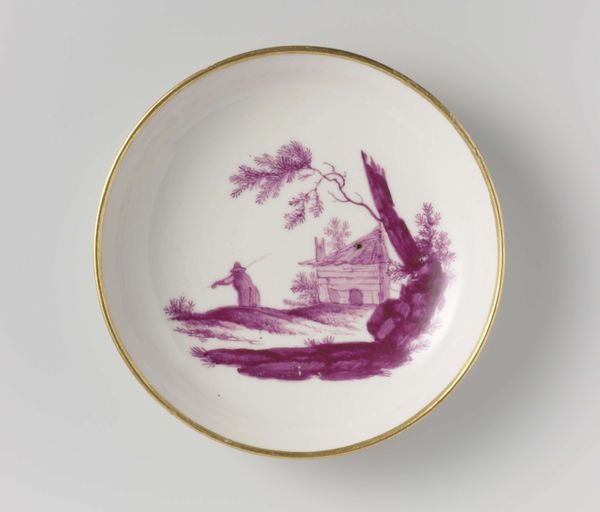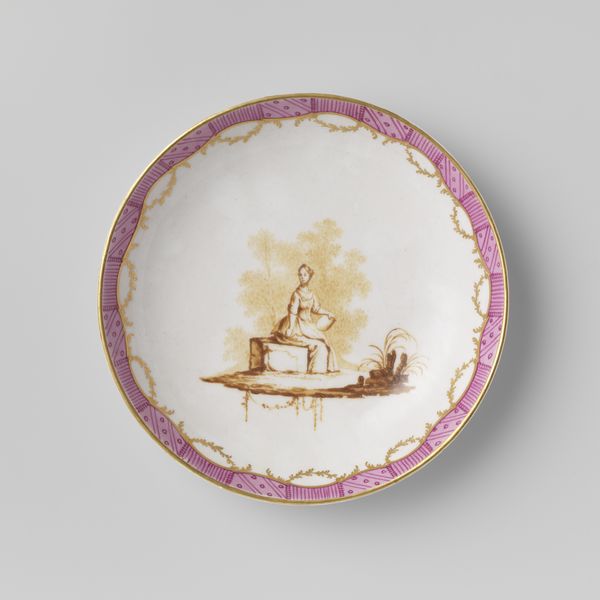
Saucer with a landscape on a purple ground c. 1765 - 1770
0:00
0:00
painting, porcelain
#
painting
#
landscape
#
porcelain
#
miniature
#
rococo
Dimensions: height 2.6 cm, diameter 11.9 cm, diameter 6.7 cm
Copyright: Rijks Museum: Open Domain
Editor: This beautiful saucer, titled "Saucer with a landscape on a purple ground," was created around 1765-1770 by Porzellanmanufaktur Frankenthal. It’s porcelain with a painted scene, and it’s quite small. I’m struck by how a utilitarian object is elevated with such a detailed landscape. What draws your eye to this piece? Curator: Immediately, the interplay between material, production and status jumps out. We have a mass-produced object--porcelain was booming, after all--imitating something "higher", a landscape painting. Think about the labour involved. Highly skilled craftspeople, potentially underpaid and exploited, reproducing idealized scenes of leisure for wealthy consumers. It's fascinating! Editor: So you're seeing it as a tension between the artistry and the commercial aspect of porcelain production at the time? Curator: Exactly! And how the landscape itself participates in this. Note its rococo styling--idyllic nature carefully managed for aesthetic pleasure. It suggests a controlling hand, shaping even 'nature' into a commodity for visual consumption. Is the artist elevating craft, or is craft being exploited to give value to the everyday? Editor: That makes me see the piece completely differently. I initially just appreciated the delicate landscape, but now I’m considering who made it, and for whom. Curator: Precisely! Look closely at the marks, research the porcelain production. This reveals a whole social and economic history embedded within the material object itself. It challenges our notions of "art" versus "craft". Editor: I never considered how the material and its production can be so integral to understanding the artwork's meaning. Curator: And that the context of production often changes what we consider “high art.” Keep digging, and these ordinary objects can tell some pretty extraordinary stories about labour, consumption, and taste.
Comments
No comments
Be the first to comment and join the conversation on the ultimate creative platform.
